However, the establishment of a temple to the pagan god Baal (one of the main Canaanite gods), for Jezebels use. And Jezebels attempts to spread the cult of Baal, aroused great opposition on the part of the zealous Yahwists (Yahway - the Hebrew name for God), among the common people. There was also resentment at the despotic manner of Ahabs rule, which was though to have been incited by Jezebel. She and her cult were challenged by the prophet Elijah - One of Elijah's disciples Elisha, organized the slaughter of Jezebel, Ahab and the whole royal family, as well as all worshippers of Baal. This put a stop to the Baalist threat. "Jehu" Elisha's co-conspirator, and Jehoram's general, who had led this massacre. Became king and established a dynasty that lasted almost a century (842–745 B.C.), the longest in the history of Israel.
Beyond his bloody coup d'etat, little is known of the events of Jehu's reign. He was hard pressed by the predations of Hazael, king of the Arameans, who is said to have defeated his army "throughout all of the territories of Israel" beyond the Jordan river, in the lands of Gilead, Gad, Reuben, and Manasseh. This perhaps would explain why Jehu is offering tribute to Shalmaneser III on his Black Obelisk (where his name appears as mIa-ú-a mar mHu-um-ri-i or "Jehu son of Omri"); It is though that Jehu was encouraging an enemy of the Arameans into being his friend. In the Assyrian documents he is simply referred to as "Jehu son of Omri," that is, Jehu of the House of Omri, an Assyrian name for the Kingdom of Israel.
 |
The following four pictures are of the Israelite part of the Black Obelisk.
 |
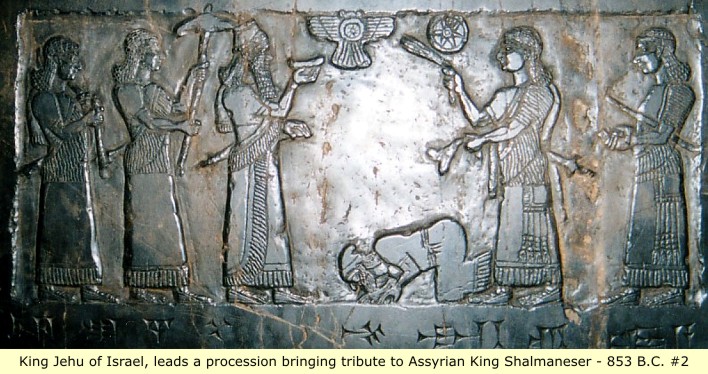 |
 |
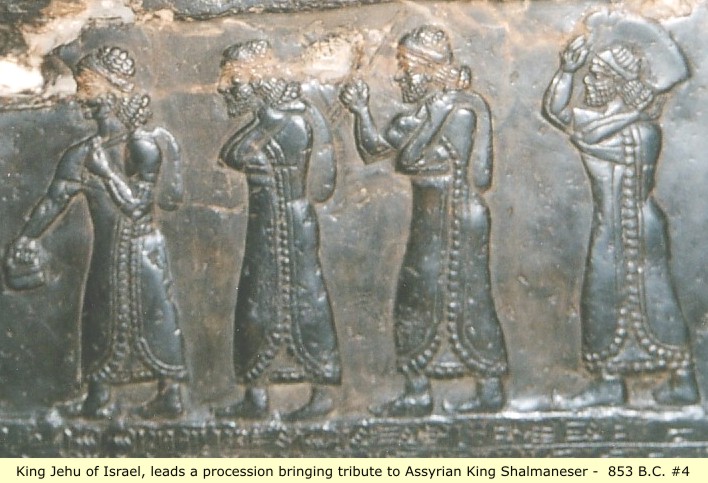 |
Meanwhile, in Judah, the Baal cult introduced by Athaliah, who was the queen mother, and effective ruler for a time: Was suppressed by a revolt led by the chief priests. Athaliah was killed and her grandson Joash (Jehoash) was made king. In the following period, Judah and Israel had alternating relations of conflict and amity, and were both involved in the alternating expansion and loss of power in their relations with neighboring states.
The Aramaeans of Damascus were the main enemy. Damascus annexed much of Israel's territory, and exercised suzerainty over the rest. They also exacted a heavy tribute from Judah. However, under Jeroboam II (783–741 B.C.) in Israel and Uzziah/Azariah (783–742 B.C.) in Judah, both of whom had long reigns at the same time, the two kingdoms cooperated to achieve a period of prosperity and tranquility, unknown since Solomon's reign.
The threat of the rising Assyrian Empire under Tiglath-Pileser III, soon reversed this situation. In 734 B.C, Tiglath-pileser invaded southern Syria and the Philistine territories in Canaan, going as far as the Egyptian border.
 |
Damascus and Israel tried to organize resistance against him, to this end, they marched against Judah to force its participation in the fight against Assyria, the Judahite king Ahaz (735–720 B.C.) instead called on Assyria for protection; In 733 Tiglath-pileser devastated Israel and forced it to surrender large territories, captives were taken and tribute had to be paid. In 732 he advanced upon Damascus, first devastating the gardens outside the city and then conquering the capital and killing the king, whom he replaced with a governor.
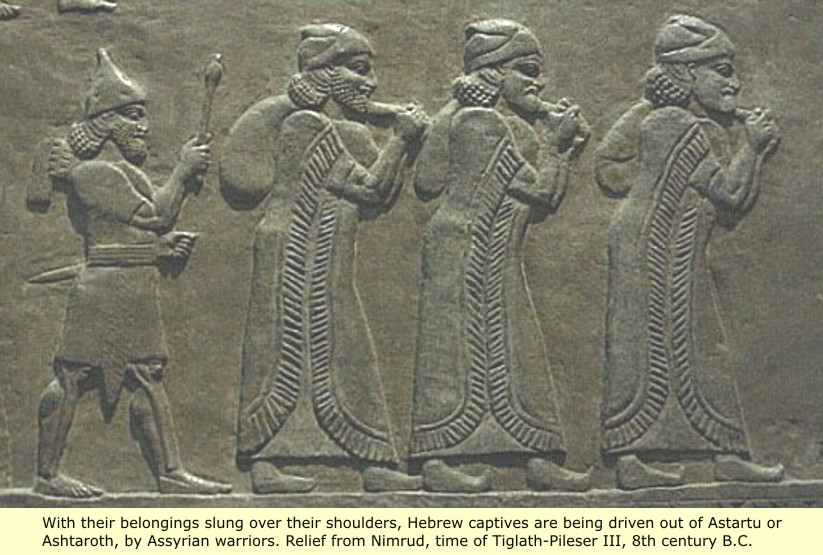 |
In 721 B.C, the Assyrian king Sargon II, laid a protracted siege on the Israeli city of Samaria. After Samaria fell, the Samarian upper class was deported to Assyria and Babylon. Samaria was repopulated with Assyrians and Babylonians.
 |
Meanwhile Judah became a vassal state of Assyria. In about 721 B.C, after an abortive revolt against Assyrian rule by King Hoshea. What was left of the Hebrew state of Israel, was annexed outright by Assyria, and thus became an Assyrian province. As was the custom of Assyria, Israel's elite citizens, amounting to nearly 30,000 people, according to Assyrian figures, were deported to Mesopotamia and Media (Iran), and new settlers were imported from other lands. Thus, the northern kingdom of Israel ceased to exist.
Assyrian and later Babylonian rule, left the kingdom of Judah, the sole heir to the past glories of David and Solomon. King Hezekiah (715–686 B.C.), lured by promises of Egyptian aid, attempted to resist Assyria, but he was defeated and compelled to pay a crushing tribute. It was probably only the timely intervention of an epidemic, which had decimated the Assyrian army of king Sennacherib, that saved Judah from total devastation.
Below:
Close-up of a large wall relief depicting Assyrian King Sennacherib’s Attack and conquest of the Judean City of Lachish - 701 B.C. British museum, London - All.
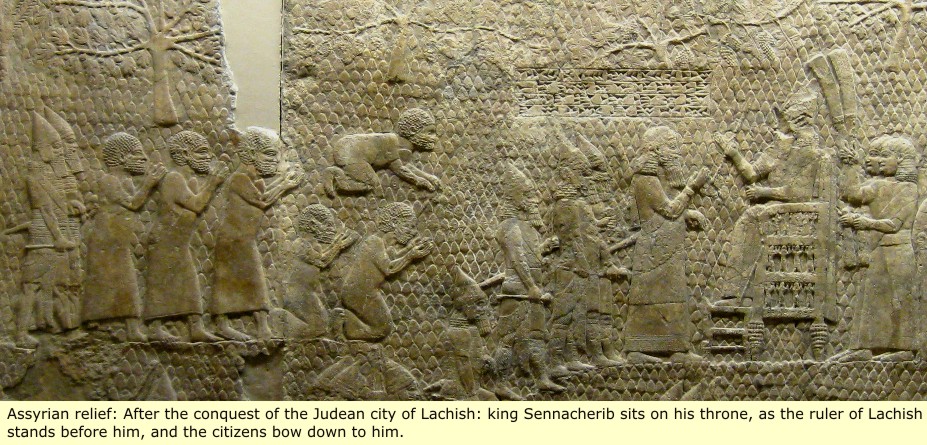 |
 |
 |
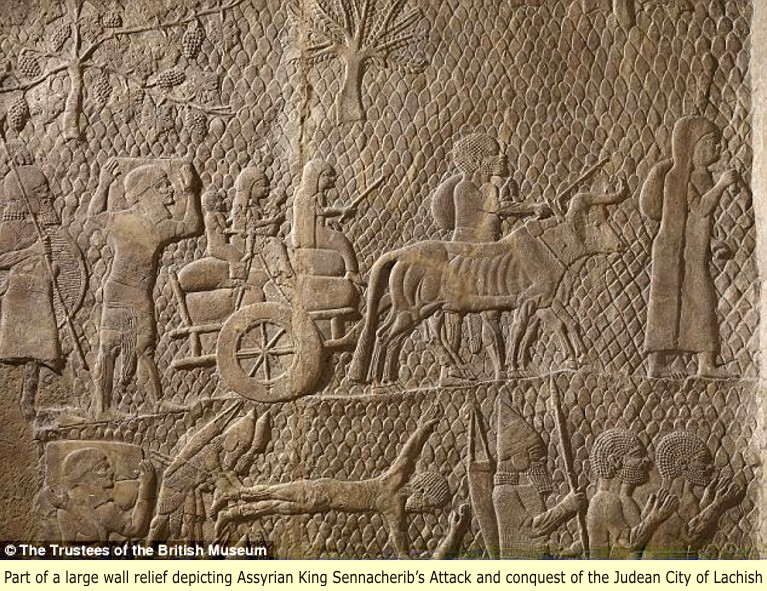 |
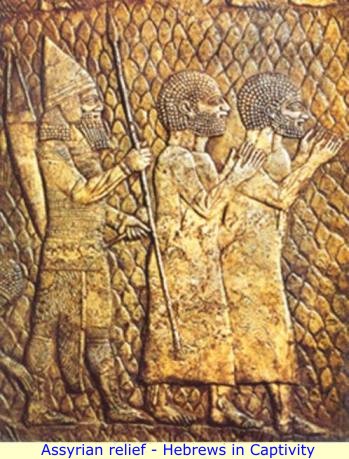 |  | 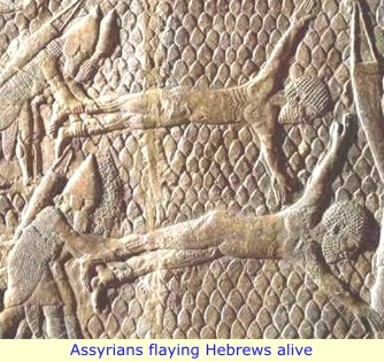 |
Later, Assyrian king Esarhaddon campaigned in Canaan. The Sidonian king Abdi-Milkutti, who had risen up against the Assyrian king, was defeated in 677 B.C, and beheaded. The town of Sidon was destroyed and rebuilt as Kar-Ashur-aha-iddina, the "Harbor of Esarhaddon". The population was deported to Assyria, and a share of the plunder went to Baal I, the king of the rival city Tyre, who was himself an Assyrian puppet. The partly conserved text of a treaty with Tyre mentions the kings of Judah, Edom, Moab, Gaza, Ashkelon, Ekron, Byblos, Arvad, Samsi-muruna, Ammon and Ashdod: ten kings from the coast of the sea, and ten kings from the middle of the sea (usually identified with Cyprus), as Assyrian allies.
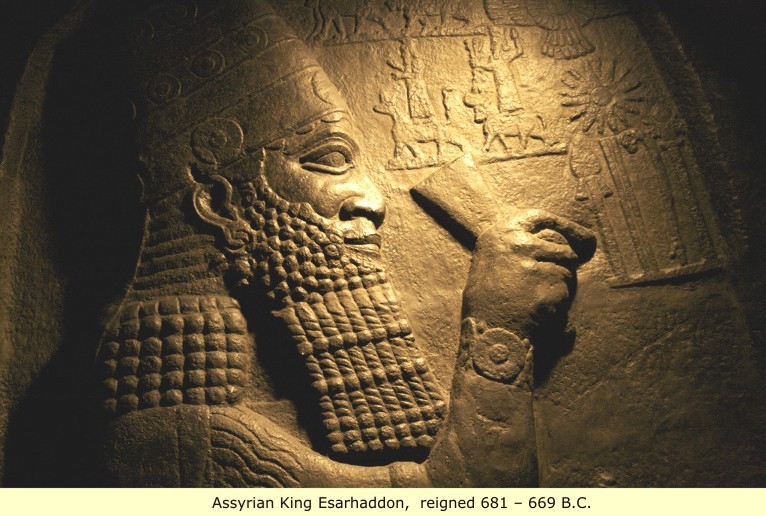 |
It was only the eloquent guidance of Isaiah, that restored the morale of the people. And even the weakness of Hezekiah's son Manasseh, did not bring about complete ruin. Another strong king, Josiah (640–609 B.C.), arose in time to restore the ebbing fortunes of Judah, but only for a few years. During this time, much of the ancient territory of the united Israel was brought back under the rule of his dynasty. By now, Assyria was rapidly declining in power. And in 612 B.C. its hated capital "Nineveh", was destroyed by the Medes.
 |
No comments:
Post a Comment